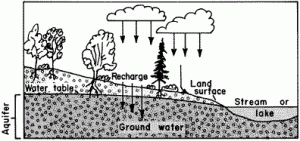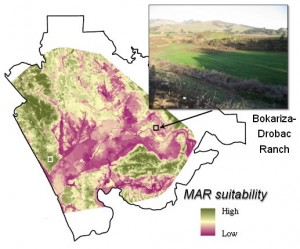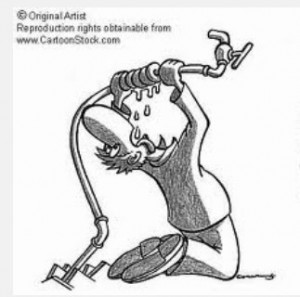This past week I’ve been working on an information packet that will be distributed during an upcoming regional board field tour. Included in this packet is a fact sheet regarding the Managed Aquifer Recharge (MAR) Action Team.
Demand for groundwater in California is increasing but supplies are limited. Here on the coast, we have to deal with the decreased water supply issue along with the issue of saltwater intrusion. “Natural” aquifer recharge will likely decrease in the future, therefore, the Community Water Dialogue is figuring out where recharge occurs in order to protect these areas.
The Managed Aquifer Recharge (MAR) Action Team is one of four action teams that make up the Community Water Dialogue. The MAR team deals with private recharge and catchment projects to increase water supply. MAR projects capture surplus winter water and convey it into the aquifer through managed percolation ponds.
The Community Water Dialogue is currently involved in one MAR project located at Bokariza-Drobac Ranch. I had the opportunity to visit this site last week, which is virtually a large grass-covered hole with a drainage area of 125 acres. Sites such as this one are voluntarily offered by landowners for the cause, which is awesome. There have been a number of other locations that have recently been identified as potential MAR project sites. These sites are currently being tested for suitability.
According to Dr. Andy Fisher, a groundwater expert from UC Santa Cruz who is actively involved in the Community Water Dialogue, “MAR will be increasingly important as a strategy for sustaining and improving groundwater resources.” Dr. Andy’s Recharge Initiative Program estimates that a widely distributed network of MAR projects could reduce the overdraft by as much as 20%.





